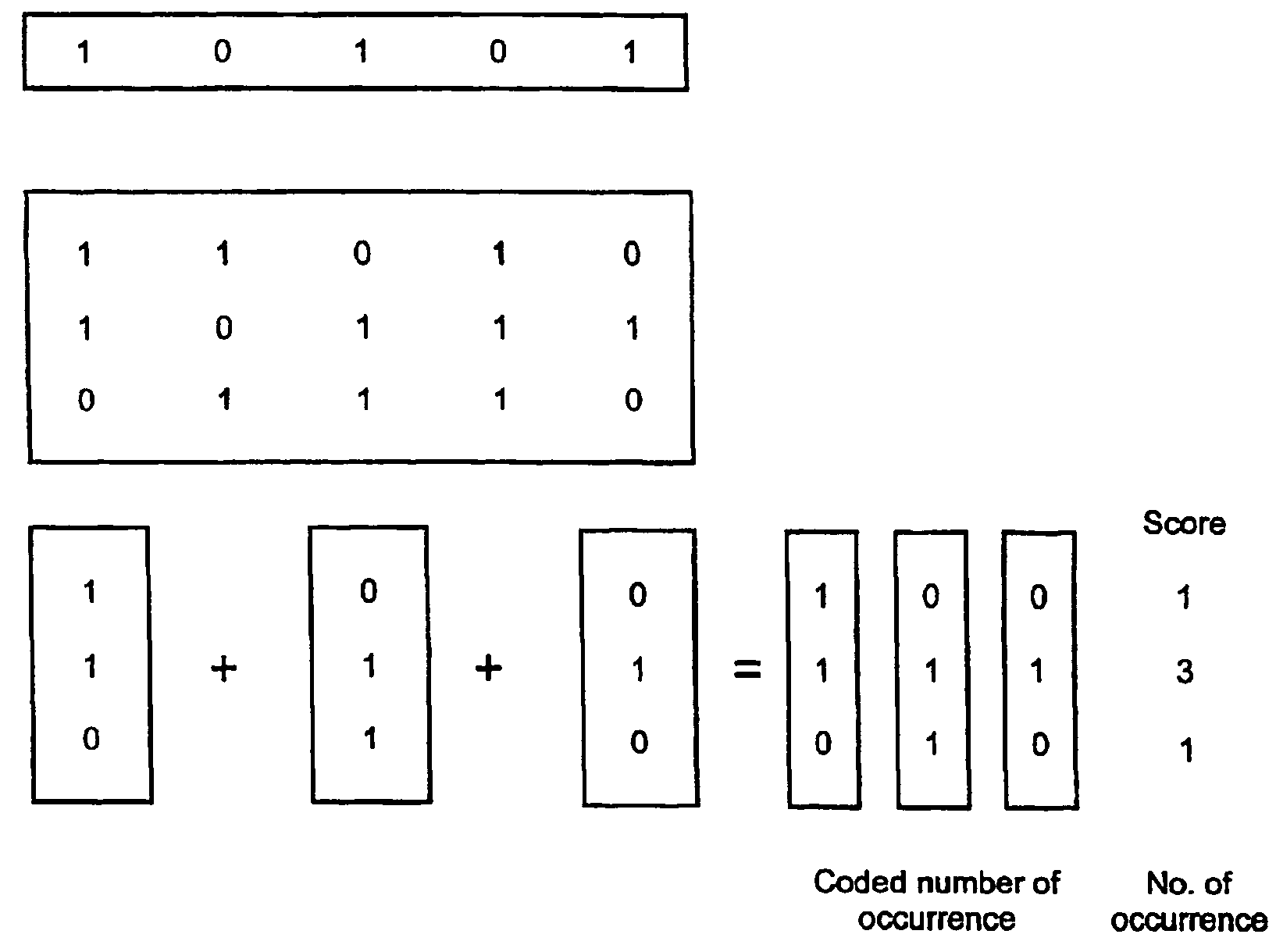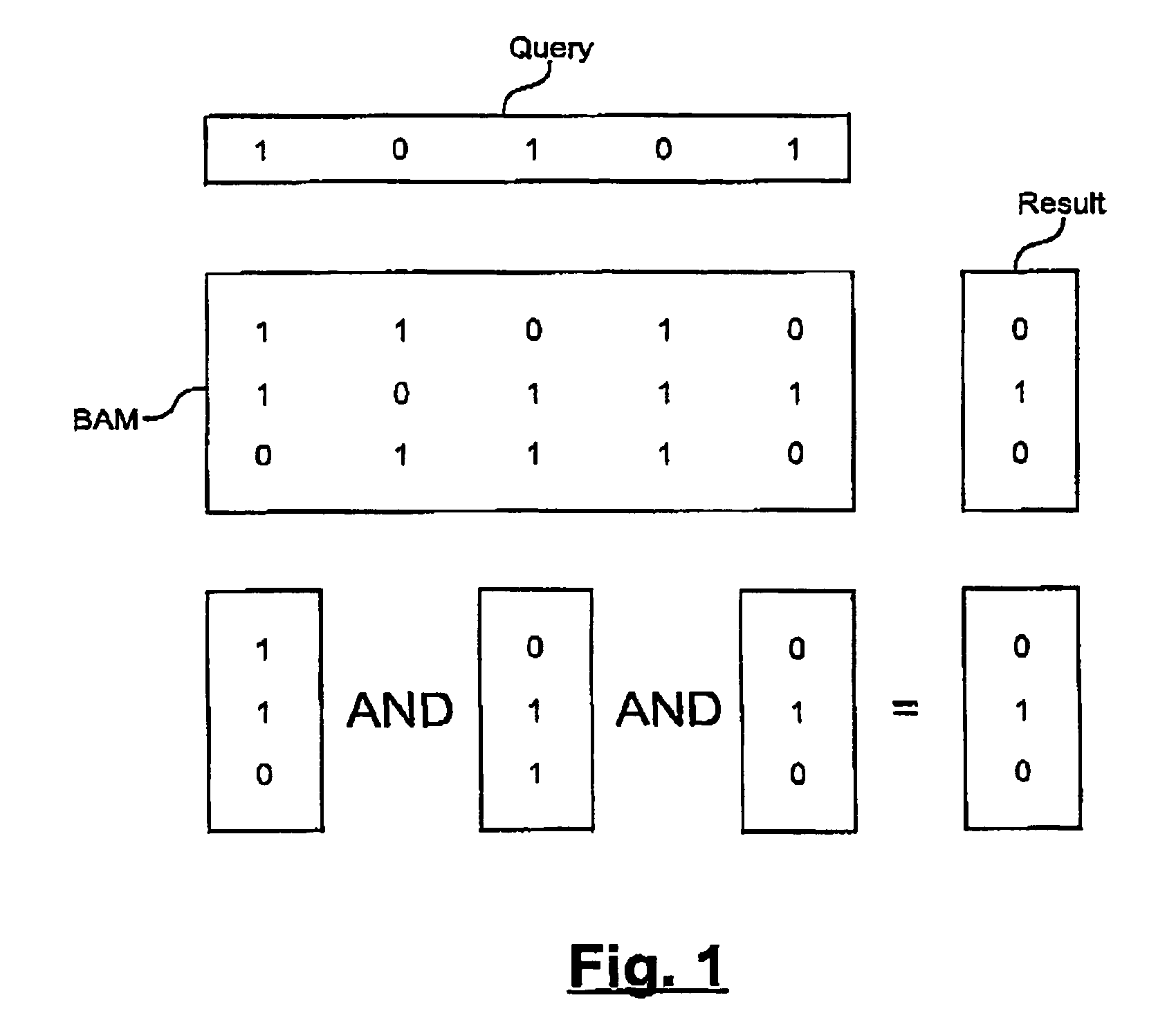Associative memory
a technology of associative memory and learning rule, applied in the field of associative memory, can solve the problems of not being particularly fast or scalable, and the learning rule of the hopfield model is very simple, and achieve the effect of efficient and flexible retrieval and/or storag
- Summary
- Abstract
- Description
- Claims
- Application Information
AI Technical Summary
Benefits of technology
Problems solved by technology
Method used
Image
Examples
Embodiment Construction
[0031]One embodiment of the present invention is an implementation of a “searching through example” protocol: given a document which is chosen by the user as to contain the type of content she is searching for, the system finds the best fitting—and if required—all documents which are similar to the example. In general, finding similar objects to a given one involves the definition (and computation) of some similarity measure,
[0032]If we wish to retrieve some information based on its content rather than based on some search key or memory address, we must first represent the document's information. The term document as used in the following may mean a whole file or text document, or a fraction of a whole document such as a page, a paragraph, or any smaller unit of the whole document.
[0033]Before pattern recognition methods can be applied we have to express usual text into some typical features. In an embodiment of the present invention there are two types of features: one expressing o...
PUM
 Login to View More
Login to View More Abstract
Description
Claims
Application Information
 Login to View More
Login to View More - R&D
- Intellectual Property
- Life Sciences
- Materials
- Tech Scout
- Unparalleled Data Quality
- Higher Quality Content
- 60% Fewer Hallucinations
Browse by: Latest US Patents, China's latest patents, Technical Efficacy Thesaurus, Application Domain, Technology Topic, Popular Technical Reports.
© 2025 PatSnap. All rights reserved.Legal|Privacy policy|Modern Slavery Act Transparency Statement|Sitemap|About US| Contact US: help@patsnap.com



